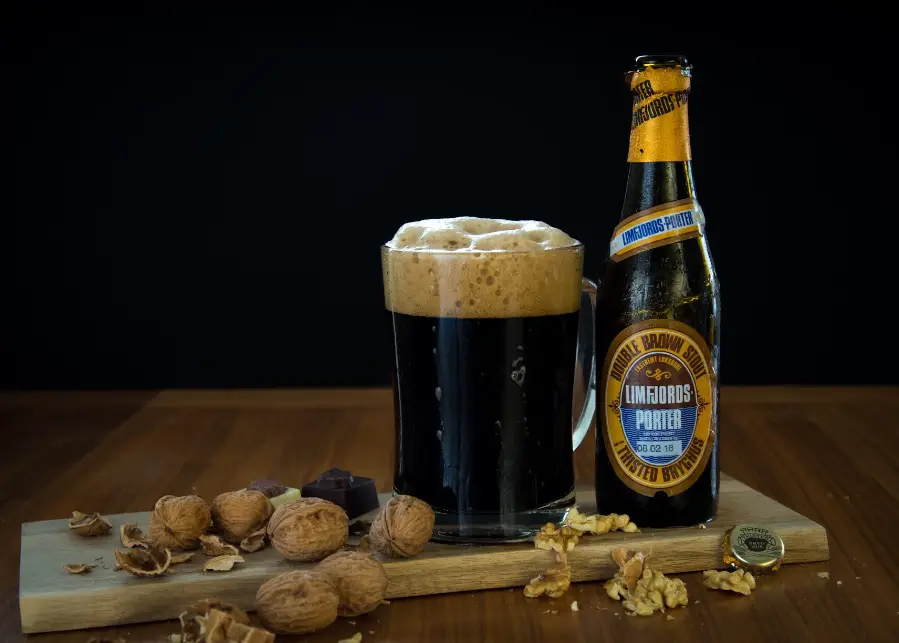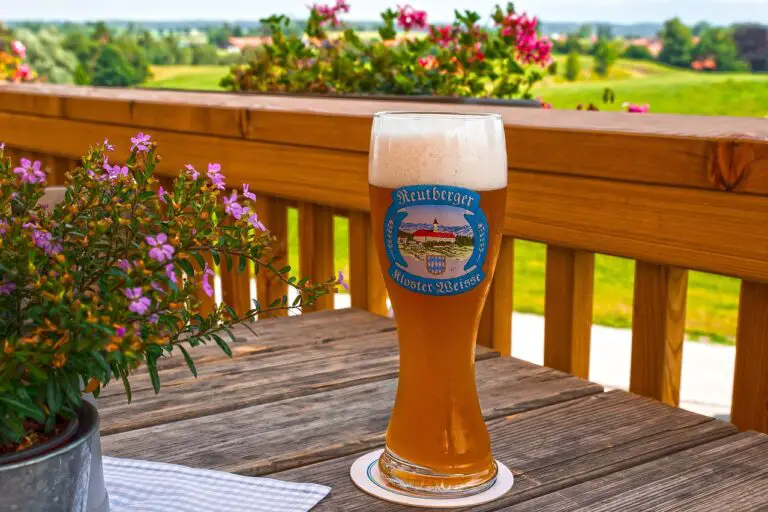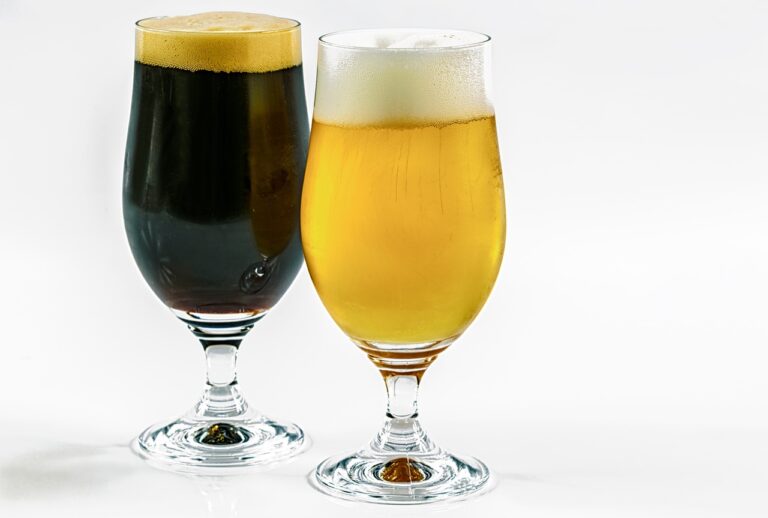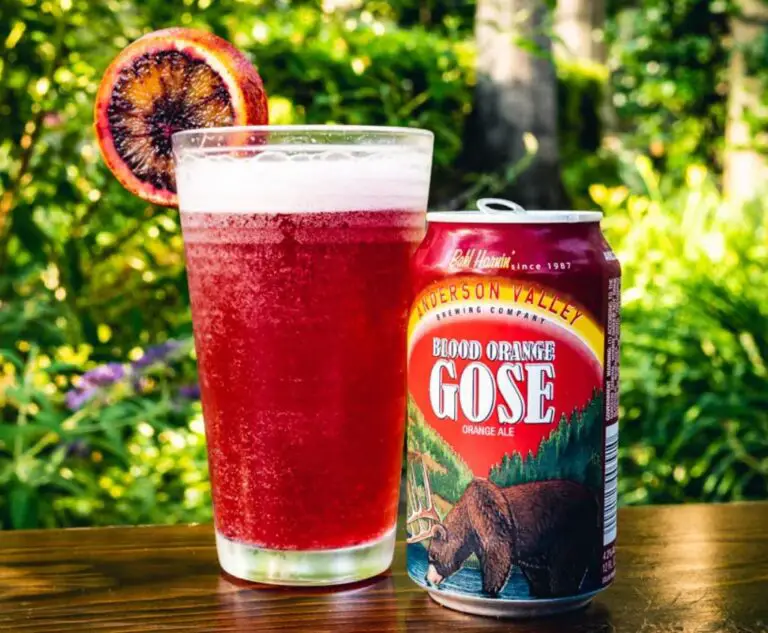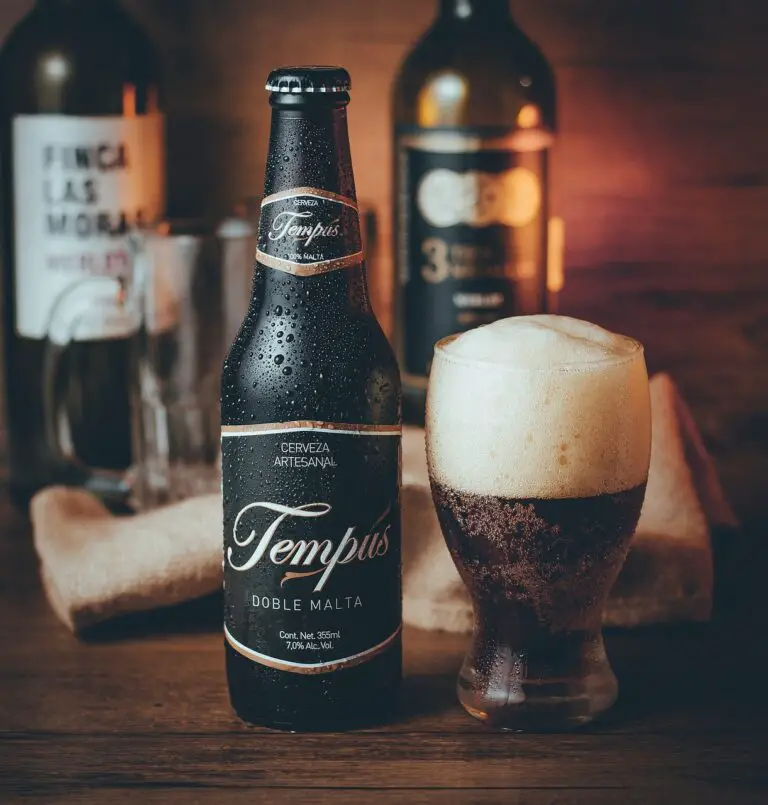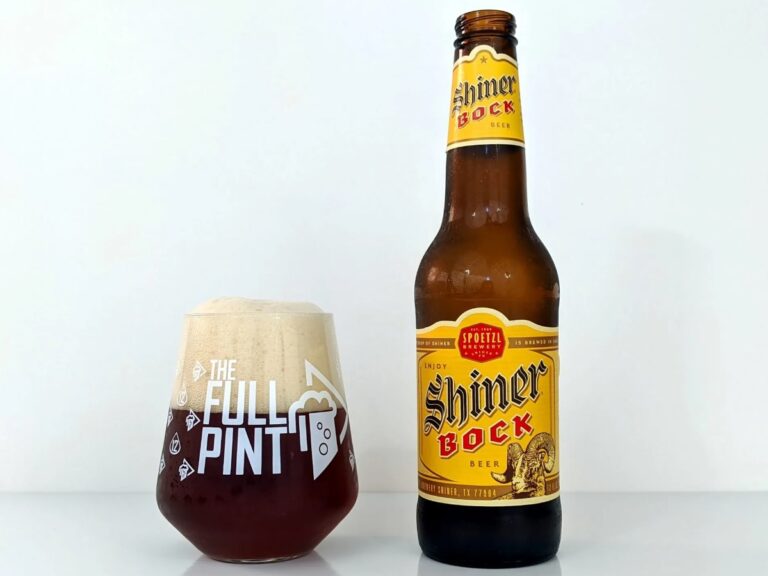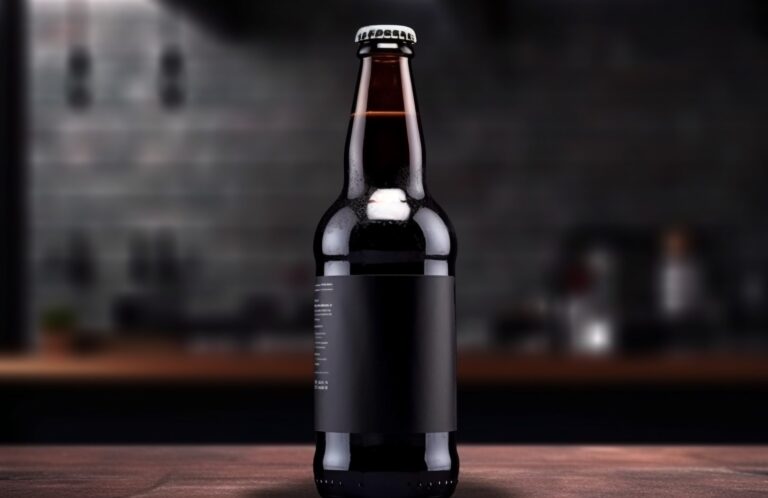What Is Dark Beer Made Of?
So… dark beer – we love it, we LOVE it, but why is it dark? More specifically, what is dark beer made of?
Dark beer is cool – it gives it a cool, dark vibe. But, what’s the secret sauce?
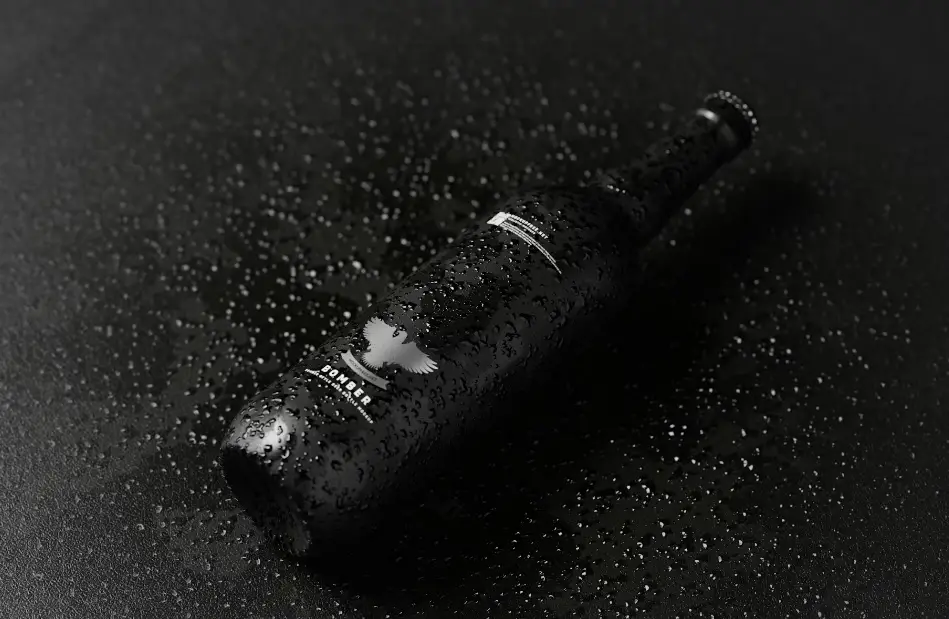
The answer is simple: dark malts. They’re like the rockstars of the beer world, bringing the color and packing a punch in the flavor department. We’re here to spill the beans on what makes dark beer dark, keeping it simple and straight-up. No fancy stuff, just the lowdown on the key ingredient that makes your favorite dark brew stand out.
Ready to dive in and demystify the darkness? Let’s roll!
Follow us on Instagram here:
Special Ingredients in Dark Beer
Dark beer is… beer… so, the ingredients are very similar to other types of beer. However, some ingredients are special, or specific to dark beers. Hops may be different, malt may be different, and so on. Let’s see!
Malt:
- What’s the Deal: Malt is the MVP here. It’s like the canvas of a painting, setting the foundation for the beer. In dark beer, we kick it up a notch with special dark malts. These bad boys undergo a roasting process that brings out deep, rich flavors and, of course, that signature dark color. It’s like upgrading your regular to a deluxe version.
Water:
- Cutting to the Chase: Water might not sound exciting, but it’s crucial. No, we’re not talking fancy mountain spring water here. The key is having good quality water that doesn’t mess with the flavors. Clean, reliable water lets the other ingredients shine. It’s the unsung hero in the background, doing its job without stealing the spotlight.

Hops:
- Straight Talk: Hops are the spice of the beer world. In dark beer, we often use specific hop varieties that complement the robust flavors from the dark malts. They add a bit of bitterness to balance the sweetness, but we keep it real – it’s not about overpowering, just enhancing the whole experience.
A. Traditional Bittering Hops:
- The Backbone: Dark beers, like stouts and porters, often rely on traditional bittering hops. These are the hops that add bitterness to counterbalance the sweetness from the dark malts. Varieties like Magnum, Chinook, or Northern Brewer are common picks, providing a stable foundation without overshadowing the malt richness.
B. Noble Hops:
- A Touch of Elegance: Some brewers opt for noble hops, the aristocrats of the hop family. Saaz, Tettnang, or Hallertau varieties bring a more refined bitterness and subtle floral or herbal notes. They’re like the sophisticated sidekick, adding layers of complexity without stealing the spotlight.
C. Aroma Hops:
- The Scent of the Story: Dark beers aren’t just about bitterness; they’re about the aromatic journey. Aroma hops like Willamette, Fuggle, or East Kent Goldings contribute earthy, woody, or even spicy aromas that mingle harmoniously with the roasted character of dark malts.
D. Experimental and New World Hops:
- Pushing Boundaries: Brewers love to experiment, and dark beers are no exception. New World hops like Cascade, Amarillo, or Simcoe can introduce citrus, pine, or tropical fruit flavors. These choices can elevate a dark beer, adding unexpected twists to the traditional dark beer experience.
E. Dry Hopping:
- Final Flourish: Some dark beers, particularly hop-forward styles, might undergo a process called dry hopping. This involves adding hops after the boiling stage, imparting intense hop aromas without significant bitterness. It’s like a burst of hoppy freshness in the midst of the dark tapestry.
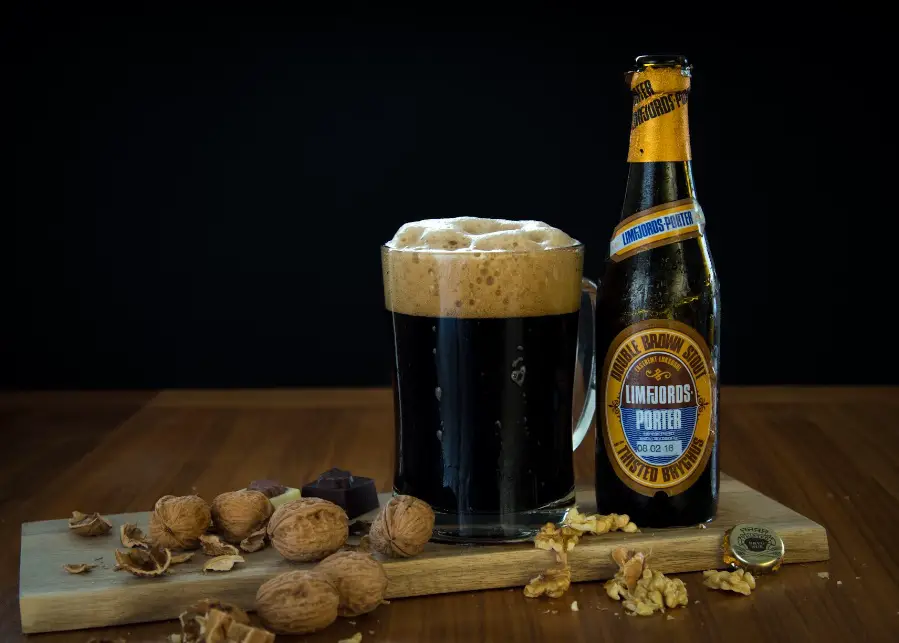
Yeast:
- Getting Down to Business: Yeast is the wizard behind the scenes. Now, in dark beer, we might opt for certain yeast strains that play well with the darker flavors. They work their magic during fermentation, turning sugars into alcohol and carbonation. Think of them as the secret agents turning our malt dreams into a reality.
A. Ale Yeast:
- The Classic Player: Most dark beers rock the ale yeast. Why? Because it thrives at warmer temperatures, giving it the perfect environment to work its fermentation magic. This yeast delivers a medley of fruity and spicy notes that dance alongside the rich flavors from those dark malts.
B. Stout and Porter Yeasts:
- Specialized Characters: Stouts and porters, the heavyweight champs of dark beer, sometimes call for their own yeast strains. These strains are carefully selected to enhance the specific characteristics of these brews. They might bring in subtle nuances like coffee or chocolate undertones, elevating the overall flavor profile.
C. Belgian Yeast:
- The Wild Card: In some dark beer styles, especially Belgian varieties, you might encounter wild and funky Belgian yeast strains. These guys are like the rebels of the yeast world, introducing spicy, fruity, and even earthy tones that add a unique twist to the dark beer experience.
D. Lagers and Dark Lager Yeast:
- Cool Customers: Don’t think dark beers are exclusive to ales. Dark lagers exist, and they have their own cool-weather yeast strains. These yeasts work their charm at cooler temperatures, contributing a clean and crisp profile, yet still letting the dark malt flavors shine.
E. Wild Yeast Strains:
- The Untamed Spirits: For the adventurous souls, wild yeast strains might be thrown into the mix. These yeasts can come from the environment or be cultivated, adding funky, sour, or complex flavors. Think of it as the brewers saying, “Let’s see where this takes us.”
So, there you have it – the basics of what goes into making dark beer special. It’s not rocket science, but it’s definitely a craft. Each ingredient plays its part, with a few tweaks to bring out the dark beer’s bold personality.
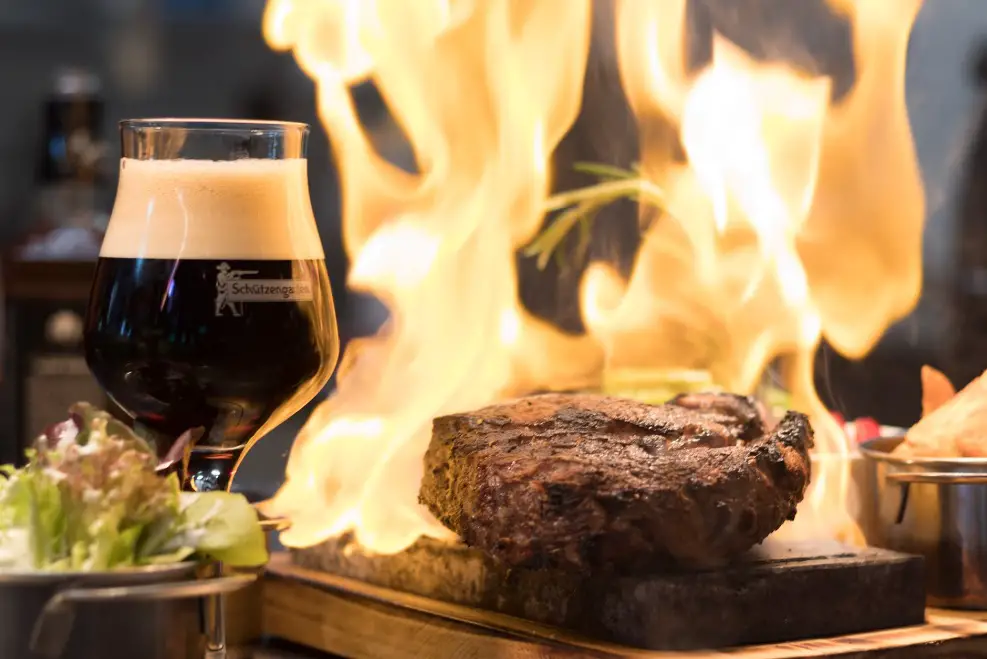
Brewing Dark Beer – Is It Special?
Yes, the brewing process for dark beer is indeed special. The emphasis on dark malts, the nuanced hopping, and the careful balancing act during mashing and boiling all contribute to the unique character of dark beer. The art lies in creating a beer that is rich, flavorful, and harmoniously balanced – a brew that stands out in the shadows.
Malt Selection:
- Darker Shades: The brewing process for dark beer begins with the selection of malts. Brewers specifically choose dark malts like chocolate malt, black patent malt, and caramel malts. These malts contribute not only to the color but also the robust flavors associated with dark beer.
Mashing and Lautering:
- Building the Base: The grains, including the dark malts, are mixed with hot water in a process called mashing. This activates enzymes that convert starches in the malt into sugars. For dark beer, brewers might employ a method called decoction mashing, where a portion of the mash is removed and boiled, intensifying the malt flavors. Lautering follows, separating the liquid wort from the spent grains.
Boiling:
- Infusing Darkness: During the boiling stage, hops are added to provide bitterness and aroma. Dark beer recipes often call for a careful balance to ensure the bitterness complements, rather than overwhelms, the rich malt flavors. Additionally, some brewers add dark malts late in the boil to enhance color and add complexity.
Fermentation:
- The Yeast Dance: Dark beer typically undergoes fermentation with ale yeast strains. These strains work at warmer temperatures, bringing out fruity and spicy notes that play well with the deep malt flavors. For some dark lagers, cooler fermentation temperatures may be used.
Maturation and Conditioning:
- Age is Key: Dark beer often benefits from a bit of aging. The maturation process allows flavors to meld and mellow. This aging period is where the magic happens, and the beer develops its full character. Dark lagers may undergo a more extended cold conditioning phase.
Carbonation:
- Bubbles of Joy: After maturation, carbonation is introduced. This can occur naturally through residual fermentation or by adding a bit of extra sugar before packaging.
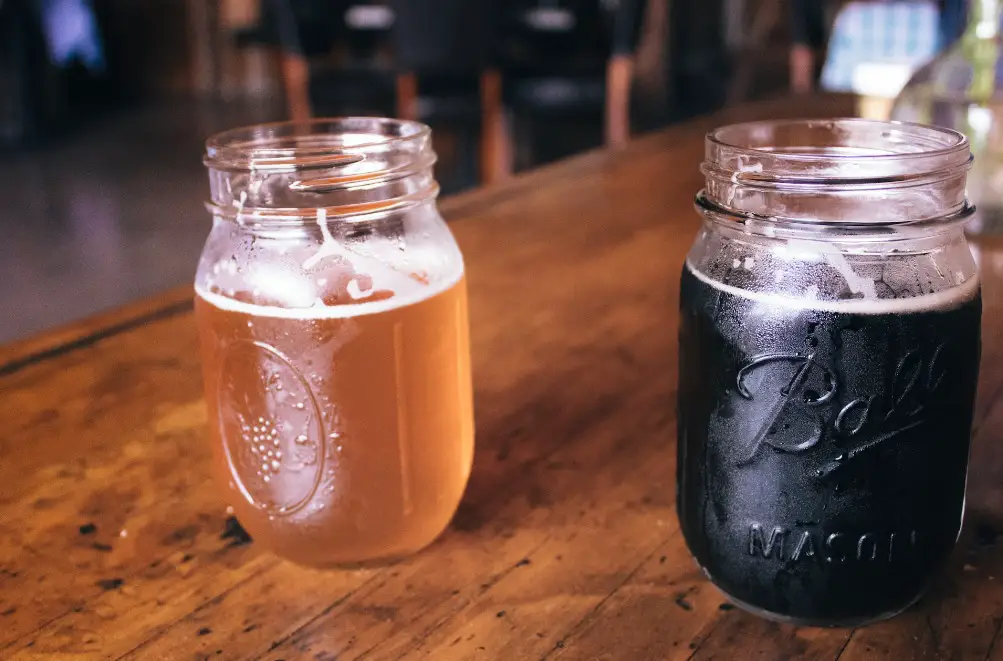
Dark Beer – Common Misconceptions
Dark Beer is Always Stronger
- Reality Check: Nope, the color doesn’t equal a one-way ticket to Boozeville. Dark beer comes in various strengths, just like its lighter counterparts. Don’t let the color fool you; there’s a dark beer for every palate, whether you’re sipping or chugging.
All Dark Beers Taste the Same
- Straight Talk: Think of dark beer like a flavor rainbow. Stouts, porters, and dunkels each bring their unique vibes. Some are chocolatey, others coffee-infused, and some might surprise you with a hint of caramel. It’s a diverse world – embrace the variety!
Dark Beer is Too Bitter
- Reality Check: Bitterness isn’t the villain here. Sure, dark beer has hops, but it’s a dance, not a brawl. The bitterness is carefully balanced with the malty goodness. If you’ve had a bitter experience, it might be time to try a different dance partner.
Dark Beer is Only for Cold Weather
- Straight Talk: Dark beer isn’t a seasonal exclusive. It’s not hibernating until winter. Whether it’s sunny or snowy, dark beer is ready to party. Pair a stout with your summer BBQ or enjoy a porter by the fireplace – it’s a year-round affair.
Dark Beer is Overly Filling
- Reality Check: Your belly’s not running a marathon after a pint of dark beer. While some dark beers have a full-bodied feel, not all are heavyweight champs. Many are surprisingly smooth and won’t weigh you down like a brick in the stomach.
Dark Beer Doesn’t Pair Well with Food
- Straight Talk: Dark beer is a foodie’s dream. From chocolate desserts to hearty stews, it plays well with a variety of dishes. The flavors in dark beer can complement and enhance the dining experience – it’s like having a culinary sidekick.
Dark Beer is Intimidating
- Reality Check: It’s not a secret society; dark beer is for everyone. Don’t be scared off by its mysterious appearance. Take the plunge, try different styles, and find your dark beer soulmate. You might be surprised at what you discover.

Wrapping It Up
So, wrapping up our chat on dark beer – it’s basically a flavor fiesta! We’ve busted some myths, learned about the cool yeast and hop dance, and explored why dark malts are the real MVPs. Forget the stereotypes because dark beer is all about breaking boundaries and surprising your taste buds. So, next time you grab a dark brew, think of it as an invitation to a party of rich and diverse flavors.

I am a young architect with a passion that goes beyond blueprints… it’s beer! undertherosebrewing.com is more than just a blog, it’s a manifestation of my lifelong dream to explore, read, and learn everything about beer. Join the blog on this unfiltered and genuine adventure into the heart of beer culture. Cheers!

